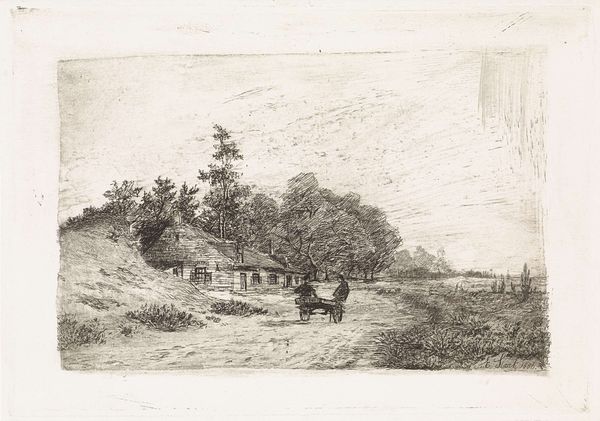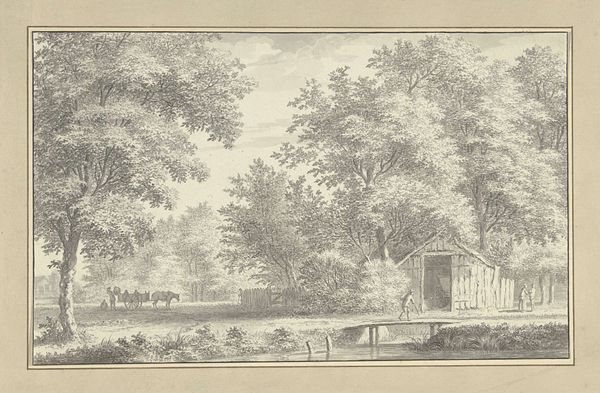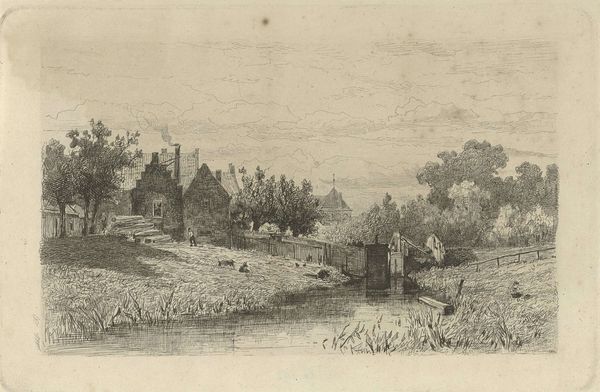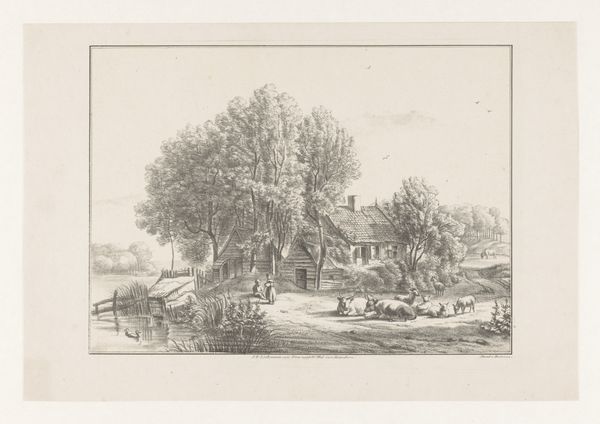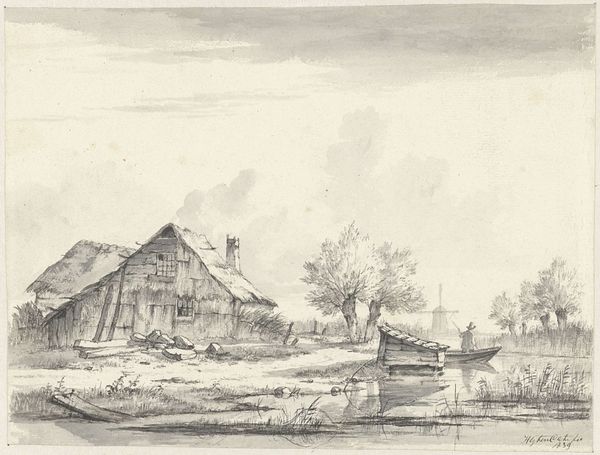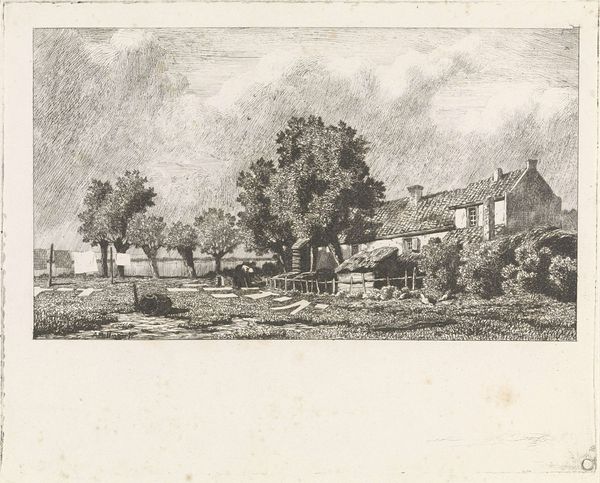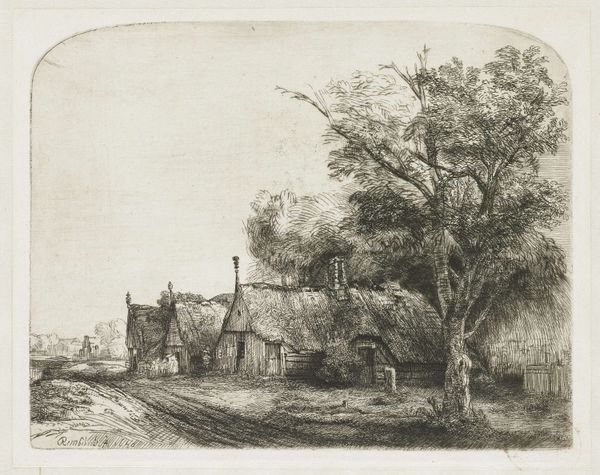
print, etching
#
dutch-golden-age
# print
#
etching
#
landscape
#
genre-painting
#
realism
Dimensions: height 127 mm, width 176 mm
Copyright: Rijks Museum: Open Domain
Curator: Here we have Elias Stark’s “De Bilt bij Utrecht”, created in 1886. It’s an etching, a wonderfully delicate example of the medium. Editor: It possesses a melancholic feel, doesn’t it? The limited tonal range, achieved with just etched lines, imparts a sort of ethereal stillness, particularly noticeable in the pale sky. Curator: Indeed. Stark seems primarily concerned with representing the tangible reality around him. Consider the depiction of daily life; the working people pictured in the scene, the details in the architecture of the buildings… it all contributes to the overall narrative. He’s showing us a world that is increasingly affected by industrialization, the simple, unadorned daily existence of workers on the land. Editor: Note how the artist constructs space. He plays with our perspective by carefully positioning lines—observe, for instance, how the artist positions the human figures riding the cart on the road as a central, almost organizing feature that leads the viewer's eye across the flat plain, to the humble cottage nestled among the trees. Curator: The etching process itself is significant. Prints became quite popular because the democratic nature of the medium. Stark would have printed and distributed many copies of this scene allowing ordinary people to contemplate a romantic image of the rural past amid massive social and economic change. Editor: I wonder about the role of absence, too. So much is implied, and left undone. The relative lack of dark lines perhaps signifies a society undergoing an existential fading as technology transforms lived experience. Curator: It makes you consider the position of the landscape tradition in Dutch art more generally. It offered a recognizable set of themes through which ideas about nationhood and identity could be explored at all levels of society. Editor: Looking at it now, it resonates differently knowing a little about the socio-political forces influencing the artist. Curator: Yes, paying attention to those conditions adds a deeper dimension to the interpretation of this piece. Editor: Ultimately, the way the simple etching technique brings about the work’s effect remains remarkable.
Comments
No comments
Be the first to comment and join the conversation on the ultimate creative platform.
